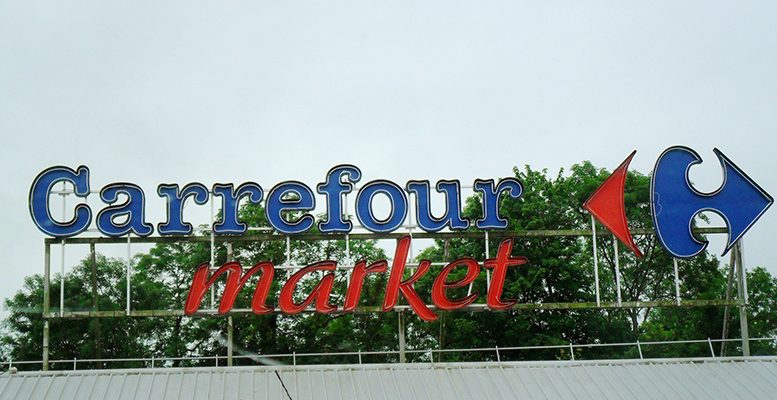On January 17, Carrefour revealed details of group sales and once again revised its operating profit forecast for 2017 downwards to 2 billion euros. The stock price fell 1.7%. On Tuesday, Carrefour has announced a transformation plan to restructure its business model over the next five years. That negative trend in its results is behind this company’s adjustment plan.
A good part of the actions to be undertaken corresponds to company’s adjustment programme. Carrefour has announced a voluntary redundancy scheme for 2,400 employees in France, the sale or closure of the 273 shops it bought from DIA in the country and a reduction in costs in three areas: purchases, where it hopes to eliminate 10% of supply; corporate, reducing the structure and logistics.
The goal is to obtain savings of 2 billion euros in 2020. Meanwhile, investments will increase by 2 billion euros over the period. The majority of these funds will be earmarked for consolidating an omnicanal structure which helps it compete with Amazon and other rivals. The objective is to reach online food sales of 5 billion euros and a market share of 20% in France, where the group is developing a plan aimed at achieving home deliveries in one hour in 15 cities. The digital plan also includes grouping all the firm’s supply on one single platform in the 33 countries where it operates. They aim to open over 2,000 convenience stores in the biggest European cities over the next five years and expand its cash&carry model throughout Latin America.
The development will be handled by a subsidiary of Publicis. As far as the physical stores are concerned, the group is proposing a reorganisation of its hypermarkets, the opening of 2,000 convenience shops in Europe in five years and the development of its cash&carry format to face off the growth from companies like Lidl. In order to be price competitive, it will develop its own brands more. It hopes these will represent a third of total sales in 2022.
In Alphavalue’s analysts’ opinion, the plan tackles head on the current problems facing companies in the retail sector. Carrefour’s online sales barely account for 2% of total sales currently.
We also positively evaluate the measures taken in China. Perhaps the only disappointing element is that they expected a bigger reduction in the hypermarkets space. We believe it’s a good plan, but the important thing will be to see how it is implemented. In any event, we will raise our estimates and adjust our price target upwards. The share price rose 3.22% yesterday.
As Carrefour embarks on its path towards digitalisation, at a sectorial level EBITDA margins have bottomed out this year after seeing a constant decline over the last 10 years, bascially “because the negotiating power of the food retailers with the producers has never recovered” says AlphaValue.
The good news is that FCFs have proved to be resistent. This phenomenon is due to lower capital expenditure (going from 11 billion euros in 2007 to 9 billion in 2017) and an increasingly more negative working capital, given that the weaker suppliers have had more problems to “finance” the companies in the sector. That said, from the shareholder’s point of view, it’s a fact that dividends have been covered by FCF except between 2013-2015.
The industry has not covered its Weighted Average Cost of Capital (WACC, 7.1% currently) since 2014.
Obviously, the hopeful factor shows the industry’s ROCE could reach this point in 2019. For this to happen, the 145 billion euros of capital employed in 2017 should essentially remain unchanged, which in fact suggests some closures (we already seeing a flight from the hypermarket business). But it’s not clear that convenience stores are a light way of doing business, whether they are owned or rented.
One obvious aspect of any business model in the process of improvement is asset rotation. In this area, the food-retailers have seen a constant erosion in their performance. This is further confirmation that convenience stores are good for holding on to clients but, in the final analysis, they are not cheap.
The most interesting thing is that, more than 10 years after on-line retail trading turned into “the industry’s darkest fear”, the sector has been extraordinarly slow in providing a response.
It’s also worth thinking about the retail food industry in the following terms. For every 1 billion euros of market capitalisation, the industry generates 19,000 jobs. In the case of the banks, this figure is 1,600. From that we can deduce that the politicians will not be in favour of the digitalistion of the industry…





